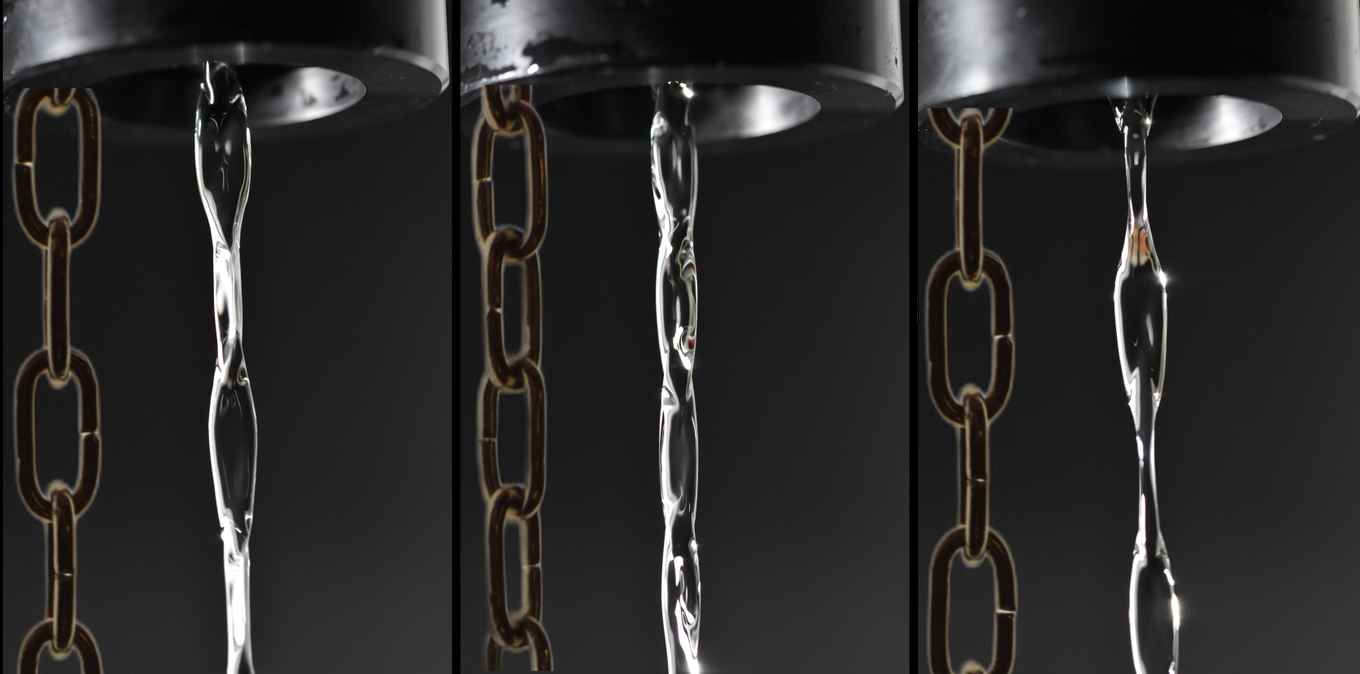Chains of liquid
11 October 2022

The research was carried out by Antoine Deblais, Daniel Bonn and Daniel Jordan (a former MSc student from the theory track) from the UvA-Institute of Physics and Neil Ribe from the Paris-Saclay University. The researchers have experimentally shown that the both the length and the thickness of the droplets in the chain are directly linked to the size of the opening through which the liquid flows. For their study, they released a smoothly flowing jet of water through a nozzle with an opening in the shape of al ellipse. They altered the size of this ellipse to create 12 differently sized holes with areas ranging from about 0.3 cm2 to 4.5 cm2. They then captured the resulting jets with a camera, extracting from the photographs the sizes of the jets’ oscillations.
Chain-link pattern
The team found that the dimensions of the opening correlated with the thickness, but also the length of the droplets in the jet’s chain-link pattern. They then developed a model that can accurately predict the parameters of the oscillations from the nozzle size. These findings could have several applications in technologies ranging from inkjet printers to metallurgy devices, as well as in the human body, for example in urology.
Now that they have better understood the effect for water, the researchers say that next they plan to conduct experiments using other liquids, such as the complex polymer solutions commonly used in industry. They would also like to investigate and model the effect on the jet pattern of non-elliptical openings, such as star- or square-shaped ones.
Based on a text by Allison Gasparini, freelance science writer based in Santa Cruz, CA.
Publication
Chain oscillations in liquid jets, Daniel T. A. Jordan, Neil M. Ribe, Antoine Deblais and Daniel Bonn. Physical Review Fluids 7 (2022) 104001.